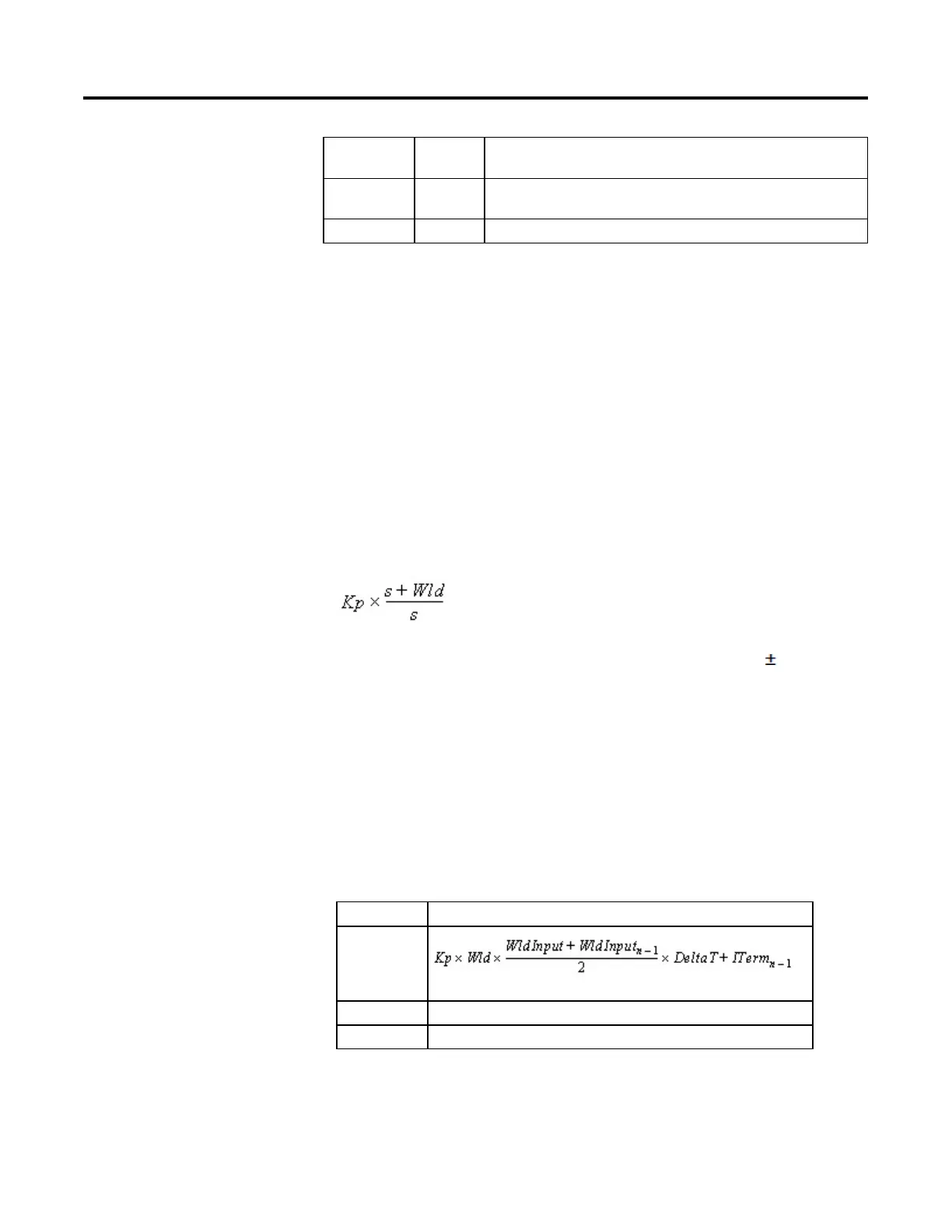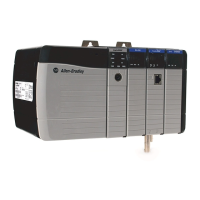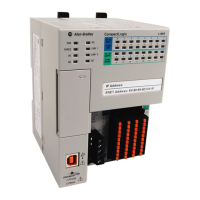274 Rockwell Automation Publication 1756-RM006K-EN-P - November 2018
Output
Parameter
Data Type Description
RTSTimeStampInv
(Status.30)
BOOL Invalid RTSTimeStamp value.
DeltaT (Status.31) BOOL Invalid DeltaT value.
Description
The PI instruction uses the position form of the PI algorithm. This means the gain
terms are applied directly to the input signal, rather than to the change in the
input signal. The PI instruction is designed to execute in a task where the scan rate
remains constant.
In the non-linear algorithm, the proportional and integral gains vary as the
magnitude of the input signal changes. The PI instruction supports two non-linear
gain modes: linear and parabolic. In the linear algorithm, the gains vary linearly as
the magnitude of input changes. In the parabolic algorithm, the gains vary
according to a parabolic curve as the magnitude of input changes.
The PI instruction calculates Out using this equation:
Whenever the value computed for the output is invalid, NAN, or INF, the
instruction sets Out = the invalid value and sets the math overflow status flag. The
internal parameters are not updated. In each subsequent scan, the output is
computed using the internal parameters from the last scan when the output was
valid.
Operating in Linear Mode
In linear mode, the non-linear gain mode is disabled. The Kp and Wld values are
the proportional and integral gains used by the instruction. The instruction
calculates the value for Out using these equations:
Value Equation
ITerm
where DeltaT is in seconds
PTerm Kp x In
Out ITerm + PTerm
with these limits on Wld:
• Low Limit > 0.0

